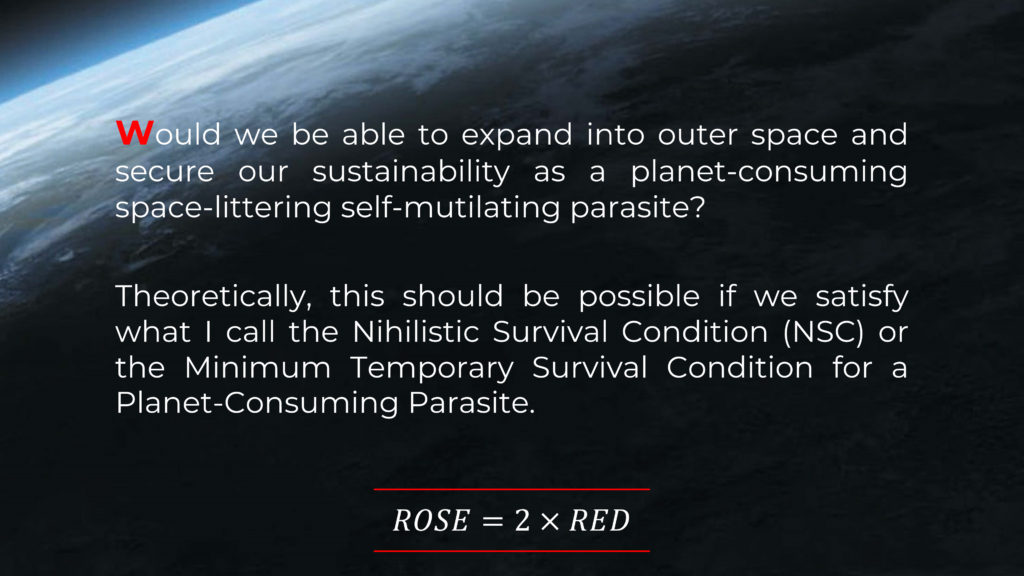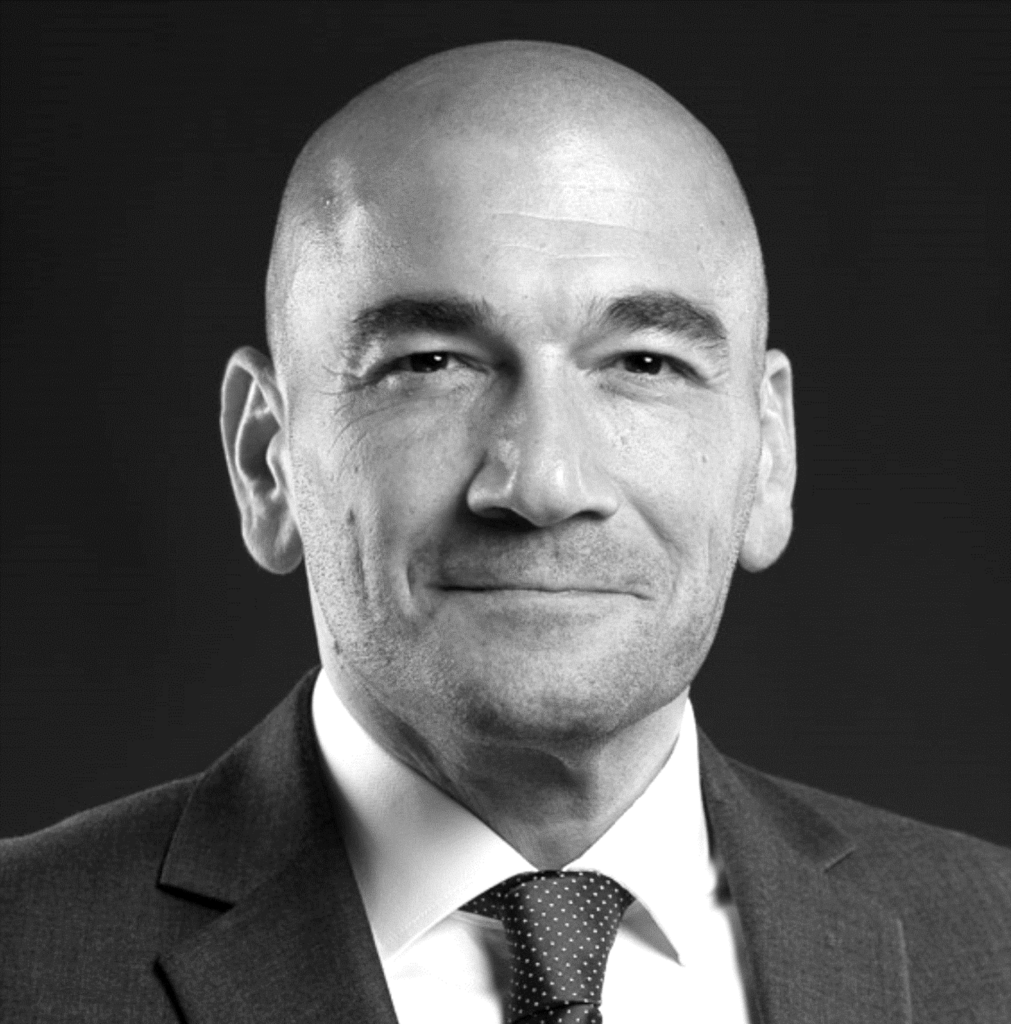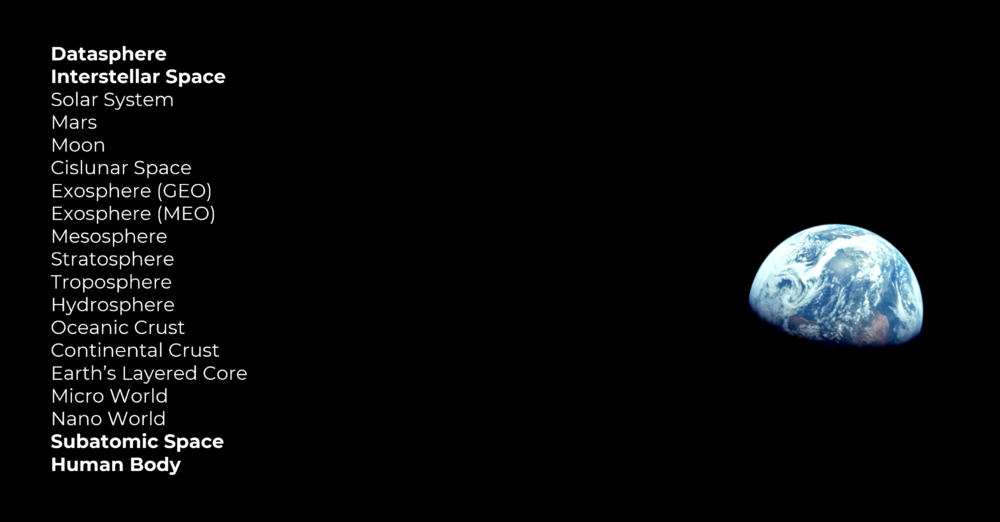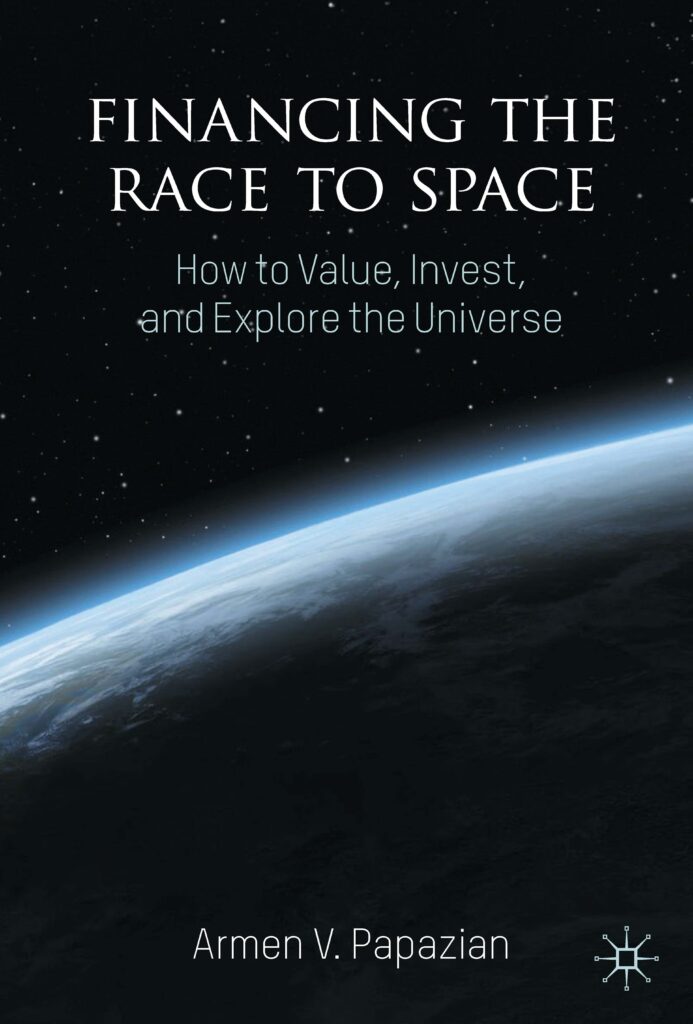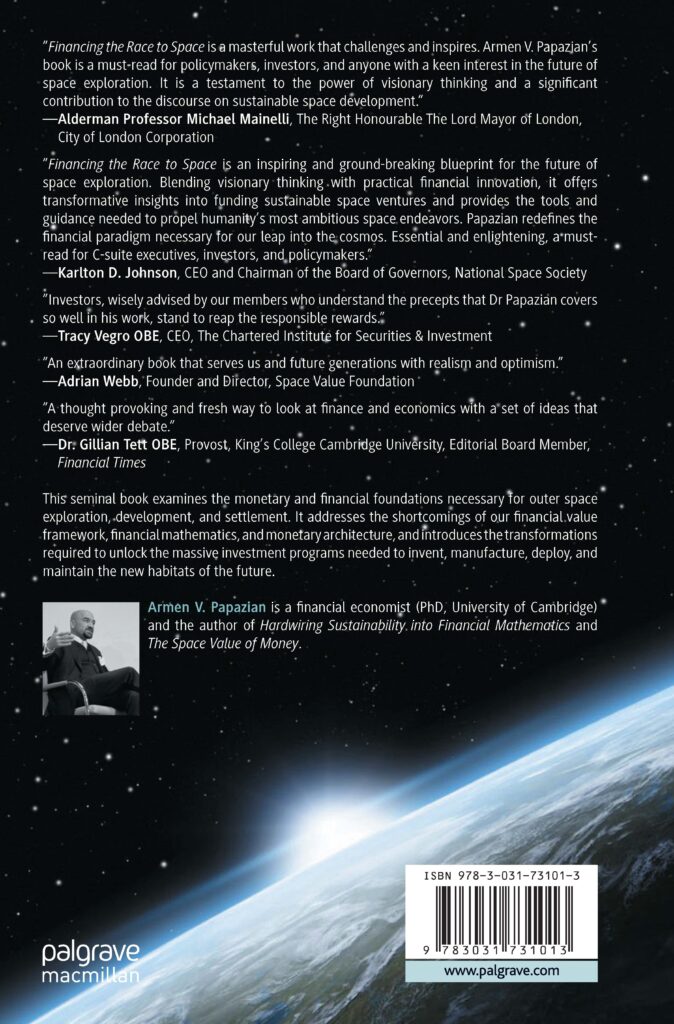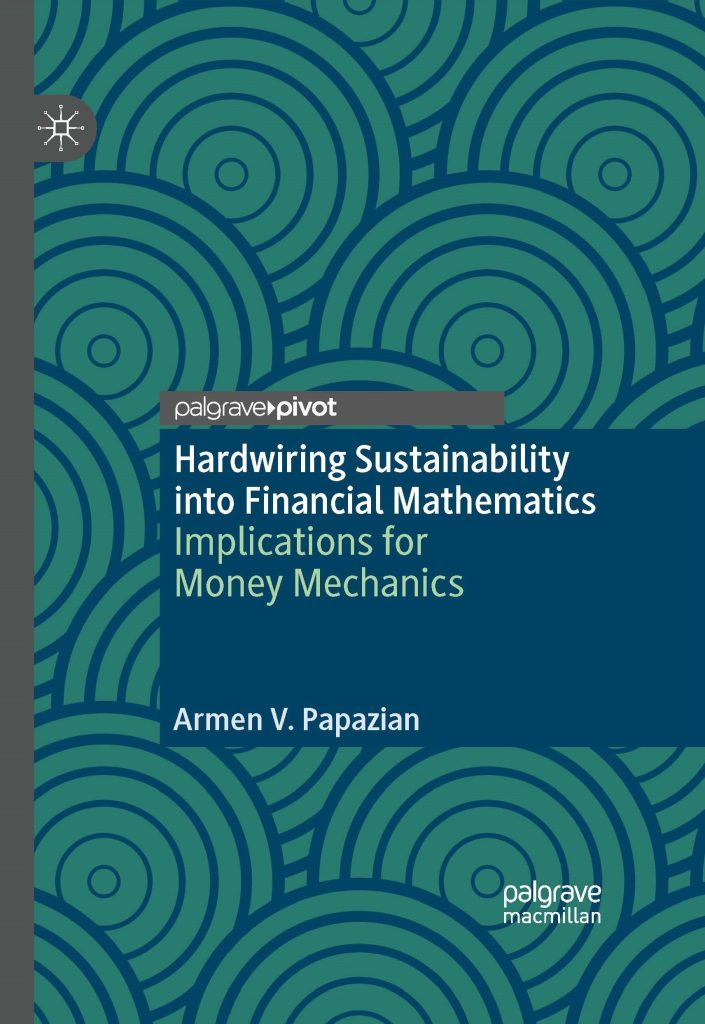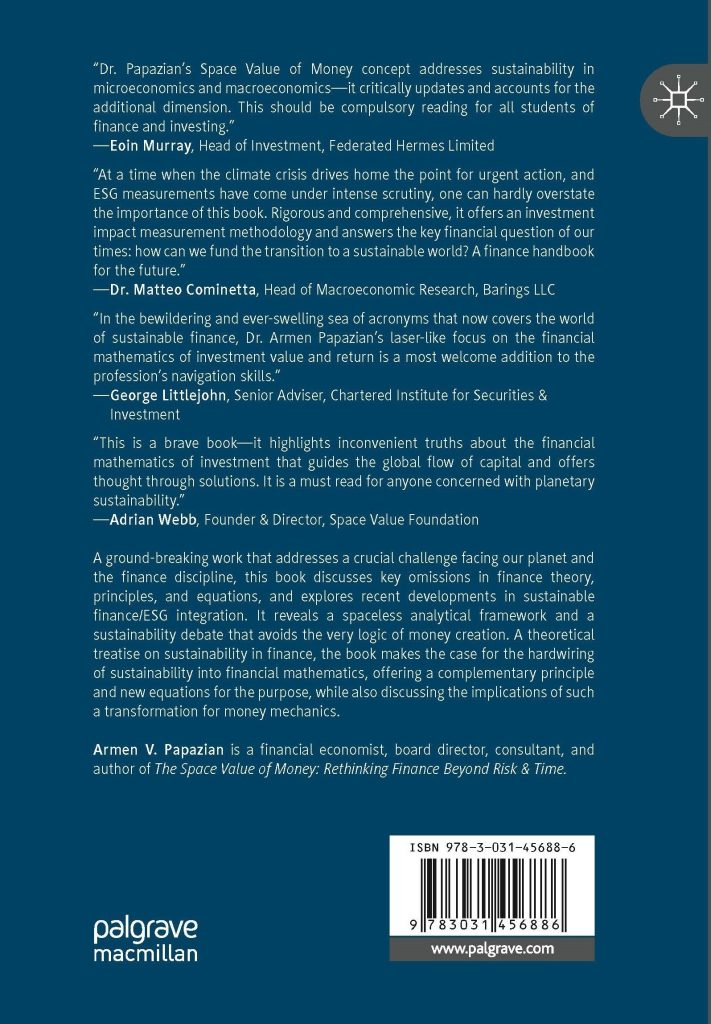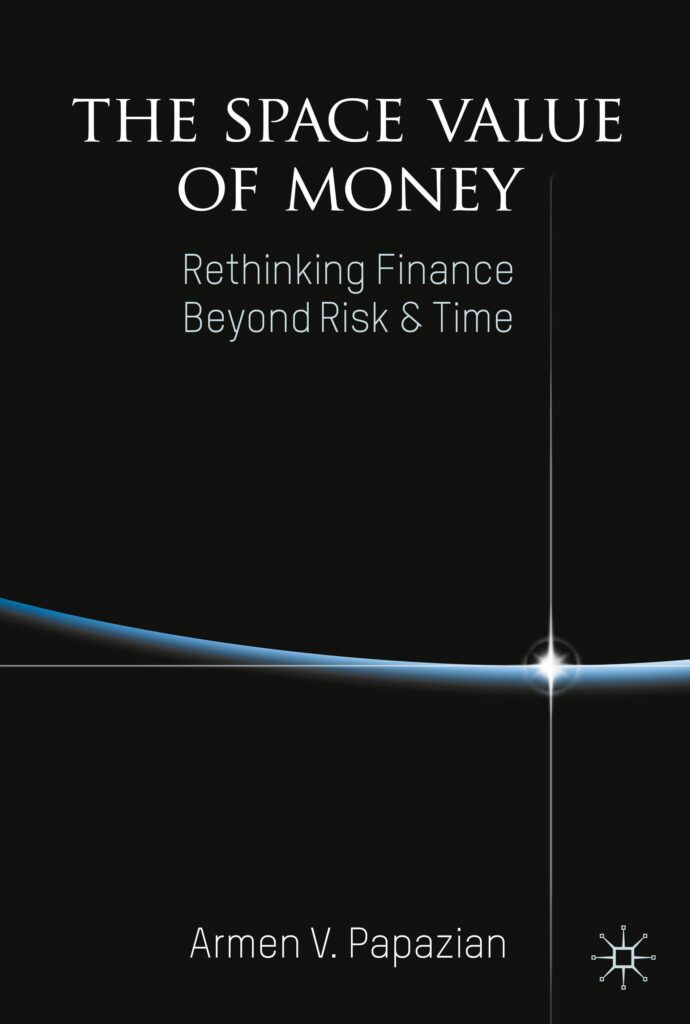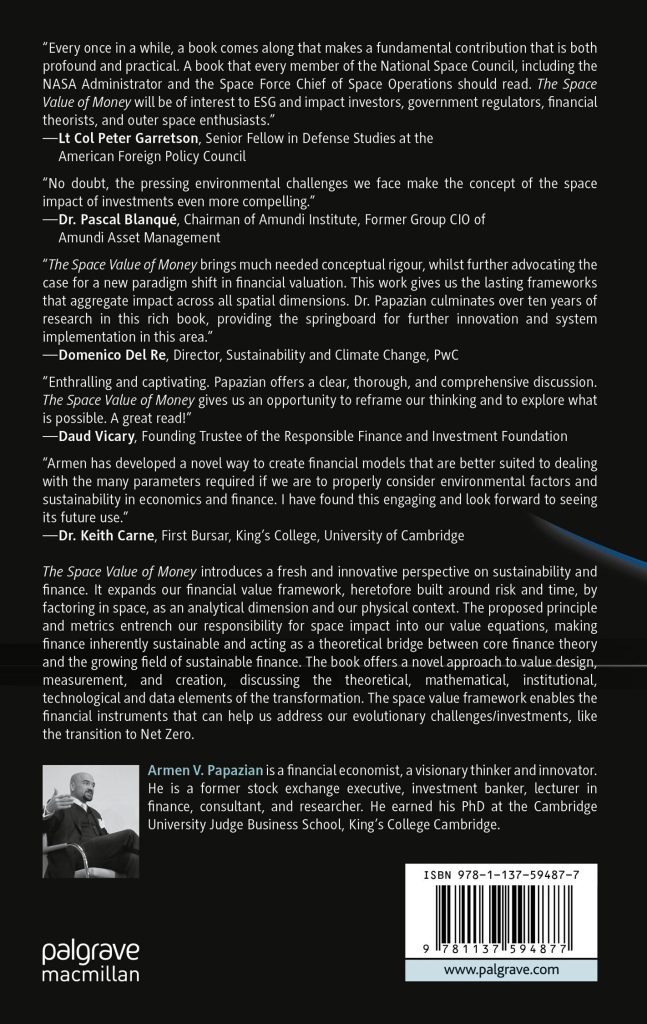“Wherever one may be on planet Earth, or on the International Space Station (ISS), or Tiangong Space Station (TSS), at this very moment, and always, one is in between stars – above one’s head and underneath one’s feet. This is the true and authentic where of the human experience – a tangible given, more real than the entire taxonomy of our projected beliefs, whether economic, financial, monetary, or other. Indeed, however limiting our interpretations of our reality may be, whether on the level of the individual, a collective, or humanity as a whole, our context suggests otherwise.”
Financing the Race to Space, 2024
Other Posts
We are relentlessly and ruthlessly destroying our only home and ecosystem, and our sustainability frameworks and standards are powerless and ineffective.
Despite many international agreements, legally binding treaties, evolving standards, alliances, initiatives, and frameworks, a change in trajectory is as elusive today as it was before sustainability became a mainstream topic of discussion. In fact, we have moved from silence to noise, changing almost nothing in our ability to stop the relentless destruction of our home planet.
Human productivity is oblivious to what it leaves behind, and how it endangers its very own survival and continuity. The carbon in our atmosphere, the plastic in our oceans, the sewage in our rivers, the radioactive waste under the ocean bed, the chemical spills, the many landfills, and the debris in orbit are all together and individually the incontestable evidence that we do not respect space, our physical context. In fact, we have littered and continue to litter every environment we touch.
Furthermore, wars and conflicts that cause immense destruction and death are being livestreamed to our screens. It seems we have yet to understand that brute force may destroy physical assets and human bodies, but it cannot eradicate the cosmically in-built freedom of self-interpretation. A freedom that defines all others, and acts as a foundational building block of the mosaic that makes the best and the worst of us all.
Indeed, “we live in our own interpretations of the universe, and at the moment, despite all our achievements, treaties, and declarations, human civilization is indistinguishable from that of a planet-consuming space-littering self-mutilating parasite fighting over resources. However proud we may be of our technological achievements and our progress to date, and however inspired we may feel by our national, cultural, and/or religious heritage, this is a fact” (Financing the Race to Space, 2024).
If we are to accept the evidence, and given the state of the world and our current path, and the resistance to change, we must ask ourselves the most uncomfortable of questions: can we secure our sustainability through outer space expansion? Can we find another host planet to consume before we irreversibly destroy Earth?
In other words, would we be able to expand into outer space and secure our sustainability as a planet-consuming space-littering self-mutilating parasite?
Image Credit: NASA, Voyager 1, 1990
Earth photographed from a distance of 3.7 bn miles
6 billion km from the Sun
Theoretically, this may be possible if we satisfy what I call the Nihilistic Survival Condition (NSC) or the Minimum Temporary Survival Condition for a Planet-Consuming Parasite.

"If we do not change our current trajectory .... we must at least ensure that we are expanding twice as fast as we are destroying everything on our path."
Financing the Race to Space, 2024
In other words, if we do not or cannot transcend the parasitic reality of human civilisation, then, at the very least, we should hope that we are smart enough to realise that we should not consume our own home from under our own feet before securing our next host.
Naturally, I am not arguing for such a path, but we must be able to face the facts and address our sustainability from where we are now.
The Nihilistic Survival Condition (NSC) is a necessary condition for the survival of the species, IF it remains on its current course. Given the state of the world and the resistance to change, should we not ensure the sustainability of the species until we finally manage to reinterpret ourselves and our place in the universe?
As of today, while we are destroying our planet at alarming rates, we are NOT expanding into outer space at the rates that would secure our sustainability.
In other words, ROSE is much smaller than RED.
While we are all witnesses to a growing outer space economy, and have had the privilege to experience many awe-inspiring achievements by public and private outer space sector entities, like NASA and Space X amongst others, we are far from the key survival condition point, where ROSE= 2xRED. We are not even at the breakpoint of ROSE=RED.
Indeed, the species spends more on defending itself from itself, than on building its collective future in outer space. The species spends more on trying to sell goods and services to itself, than on building its collective future in outer space.
I discuss the nature, structure, and many key features of the outer space economy in Financing the Race to Space. The book is about transcending the parasitic interpretation of human civilisation, and discusses the role of our monetary architecture, financial value framework, and mathematics in shaping and perpetuating the current suboptimal configuration of human productivity.
The book addresses our inability to invest and build a sustainable and fair reality on Earth, and our inability to invest and expand our reach in outer space, and offers an alternative path that can secure both, our sustainability on Earth and expansion into outer space.
In truth, one of the core reasons why our current sustainability standards and frameworks are bound to fail is because they avoid addressing the central issue of money creation, or money mechanics. In fact, they are specially designed to ‘address’ our challenges without questioning the very nature of money and the equations that govern its creation, allocation, and deployment.
As I argue and have done so before, the root cause of our current predicament is in our monetary architecture, and the financial value framework and mathematics it is built on. They are all structured around risk and calendar time, and they omit space, as analytical dimension and our physical context - a context that stretches from subatomic space to interstellar space and every layer in between and beyond.
The omission of space from our financial value framework, mathematics, and monetary architecture, and the subsequent abstraction of our responsibility for impact on and in space, is a theoretical and scientific error with far reaching implications for our societies, economies, and evolution. Indeed, the omission of space can be held responsible for our currently misconfigured productivity.
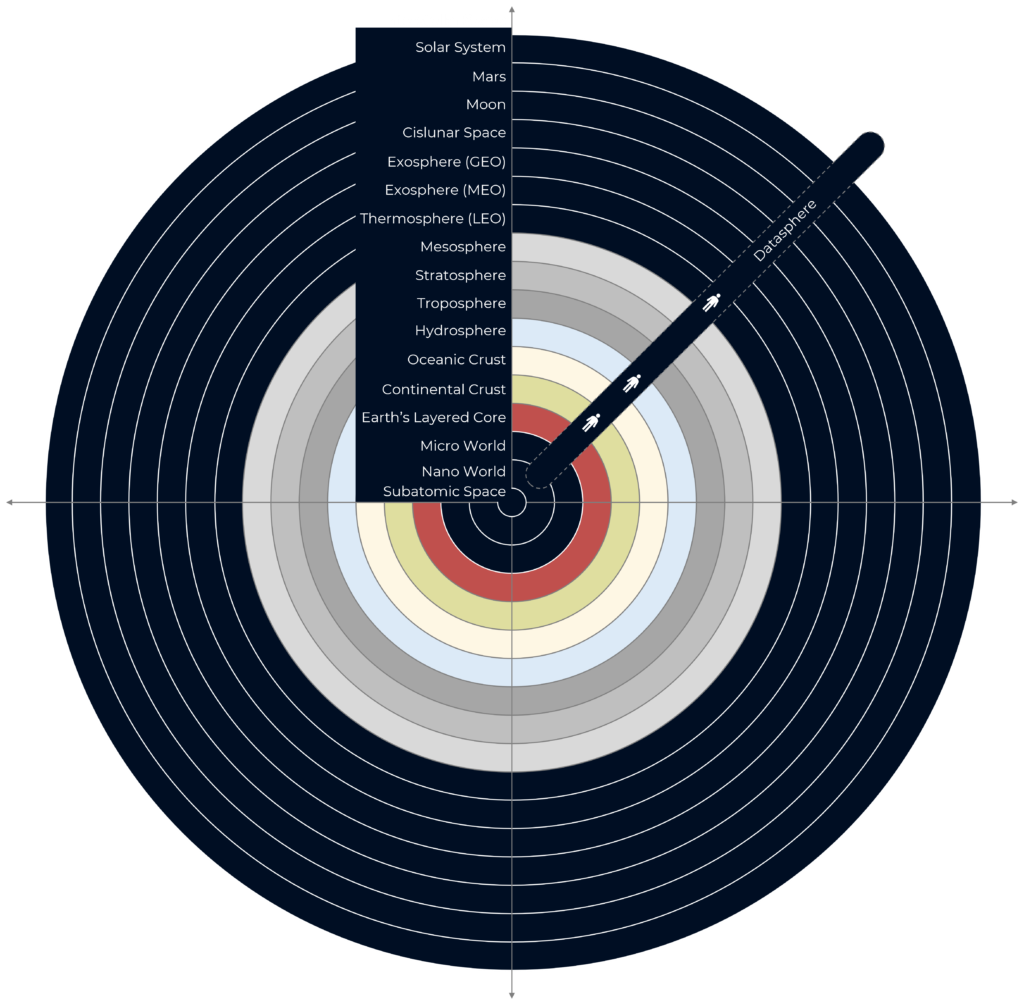
Source: Papazian 2024
In parallel, at this very moment, all of us are witnessing the devastating impact of destructive wars all over the world, all livestreamed to our many screens. It seems that the colosseum is very much alive and has gone digital, 24/7/365.
These self-inflicted horrors happen on the continental crust, they destroy cities, burn forests, and decimate human bodies, they cause pain and sorrow to millions, and they are shared through the datasphere, revealing and echoing our parasitic civilisational reality. The planet-consuming space-littering self-mutilating parasite is being filmed in action around the world.
It is not front page news that our lives on the continental crust are primarily structured through the political map. This projected reality seems to often be the main source and catalyst of these wars on the surface of Earth. While often justified by historical, cultural, economic, or religious factors, this interpretive landscape, i.e., the political map-based understanding of our terrestrial context, is but another manifestation of our spatial myopia.
I share with you below a figure (not to scale) from Financing the Race to Space that describes the depth/height of this interpretive paradigm. While it may be an important structural determinant of our lives today, in terms of inspiring identities (self-interpretations), setting rules, mobilising resources, and sourcing conflicts, in the grand scheme of things, the physical reach of this projection is relatively insignificant.
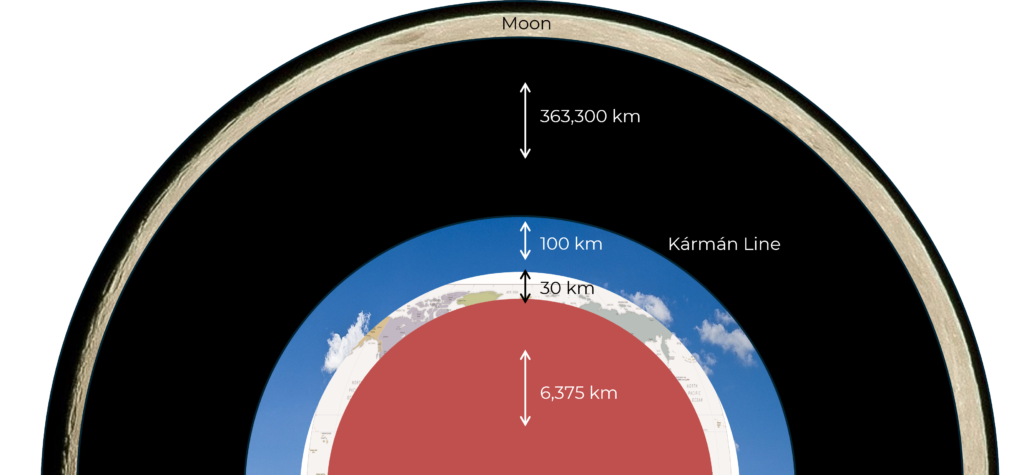
Source: Papazian 2024
Taking into account the average depth of the continental crust (30km) and the height of the theoretical Kármán line (100km) which defines the beginning of outer space and the end of national airspaces, the physical footprint of a political map-based interpretation of Space is 130km deep/tall on average.
No one is keen on claiming ownership of the molten lava underneath the crust, and national airspaces end at the Kármán line. Our map-based understanding of our context is just 130 km tall in an astronomically immense landscape. To contextualise, the distance between Houston and Dallas is 363 km, and the radius of Earth is 6,375 km. The moon at perigee (closest point to Earth) is 363,300 km away.
Compared to the vastness of our universe, a map-based interpretation of our reality constrains our reach. Given that it also defines how we create and deploy money and resources, it is also one of the key themes that distracts the species, and chains it to this planet, fighting over resources, chasing an imaginary calendar.
A spacefaring consciousness, I am convinced, will undoubtedly define itself not just in relation to the lands it comes from or leaves behind, but also in relation to the lands it discovers, and the astronomical distances it overcomes to do so.
Furthermore, a spacefaring consciousness will undoubtedly recognise that the fabric of the universe at the molecular level is an integral part of the wider cosmological context, and it is the essence upon and through which we interpret the universe and ourselves.
Indeed, a spacefaring consciousness will undoubtedly recognise that the entire continuum of space, from subatomic space to interstellar space and beyond, is accessible to ALL, and from ANY point of matter, human or non-human, on Earth or elsewhere.

Given our treatment of space and other humans, and the resistance to authentic change, if we were to remain on our current path, then, at the very least, we should be smart enough to apply the Nihilistic Survival Condition and ensure that we are expanding into outer space twice as fast as we are destroying our one and only ecosystem.
Naturally, and as mentioned above, the arguments of Financing the Race to Space are built on a vision of humanity that goes beyond a parasitic interpretation of human civilisation. Indeed, the entire purpose of the book is to secure our sustainability in space, on Earth and beyond.
This short article does not expand on the framework and models I propose, but you can learn more in the books as well as the many different tabs on this site (SV Framework, Why Space).
